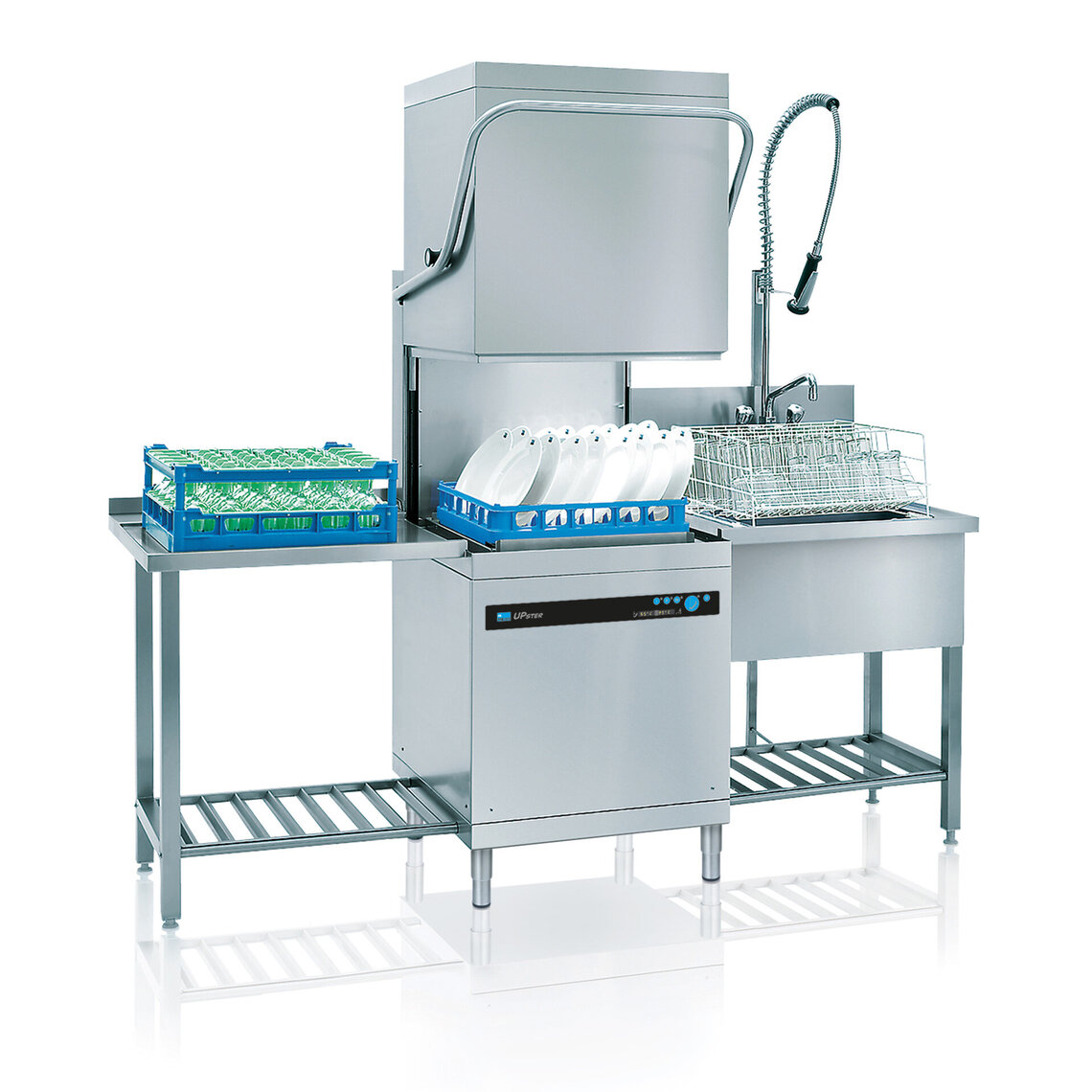We have grown used to television shows and movies showing bartenders and restaurant staff habitually wiping glassware and dishware clean and dry with a cloth. But let me tell you this now: It’s not just one of the bad cleaning and food safety practices we have grown accustomed to. It could also be a symptom that something is utterly wrong with how kitchen cleaning is run in a restaurant.
To give you a clear picture of why, let me give you one of the worst cases where I saw this practice. I visited one buffet restaurant in 2019 where the cashier was in charge of both receiving the payment and, after the customer prepays the buffet fee, giving out the plate which the customer will use to enjoy the buffet. In between these activities, the cashier was wiping the plates with a cloth.
This entire setup was a food safety risk. Firstly, using the same cloth to manually dry and wipe dishware is not only an ineffective way to “clean,” but it can also help spread bacteria and contaminate surfaces. The University of Rochester Medical School calls the sterilization cycle in a dishwasher as the most effective way to dry and the dish towel as the “least effective.” The UK’s Food Standards Agency warns that cloths are a main cause of cross-contamination in the kitchen and recommends using disposable ones whenever possible and throwing them out after the task. A University of Arizona study published in 2014 found that 25.6% of dish towels collected from 82 random households in five U.S. and Canadian cities had E.Coli, while a staggering 89% had coliforms. (Read more here.)
Secondly and more alarmingly, any person handling banknotes on a regular basis should not be handling food-contact surfaces (e.g. plates) where customers eat. Money is a notorious spreader of microorganisms. The Scientific American cites studies about methicillin-resistant Staphylococcus aureus (MRSA) having survived on US banknotes. Flu viruses on Swiss francs survive for up to 17 days if with mucus. And this article in the journal Antimicrobial Resistance & Infection Control suggests that the composition that gives banknotes their strength allows the growth and transmission of pathogens.
The message is plain and clear: Never dry food-contact surfaces with a dish towel, or risk cross-contamination.
READ NEXT: A Comprehensive Guide to Prevent an Outbreak in Your Restaurant, Hotel & Establishment
A Symptom
But let me go back to the main issue at hand and suggest that there is a deeper problem existing in establishments still wiping with a dish towel to dry their tableware. The staff are usually forced to dry manually because either there is no commercial dishwashing equipment available (and therefore the entire dishwashing cleaning process is manual and tedious) or their dishwashing equipment has not been able to dry properly.
For all the 48 years I’ve been in the cleaning and sanitation industry, the dishwashing machine is one of the most wonderful innovations in the kitchen. It washes and rinses between 140 to 160 degrees Fahrenheit and is more automated than laundry cleaning. It was built to conserve water, temperature, and chemicals. (Remember the Sinner Circle.) It was made to prevent breakages and contamination by lessening the number of hands handling sensitive food-contact surfaces.
In addition, commercial dishwashing machines use two kinds of chemicals: the dishwashing machine detergent and a drying agent. There are dishwashing machines which are low-temperature and therefore, without sustained heat to kill bacteria, chlorine is needed for disinfection.
For the restaurant owner, the practice of wiping raises a number of questions. Why is there no dishwashing equipment to ensure that plates and cutleries are properly cleaned, sanitized, dried, and maintained? And if there were such an equipment, is there something wrong with the drying agent? Are there mechanical problems with the equipment? Are standards adhered to properly?

The Importance of Kitchen Cleaning
I have been spreading the bad news of wiping for many decades now, yet the practice still thrives. Let’s stop it now and rethink if our other processes are based on the science of cleaning. This will be among the myths, misconceptions, and concepts that I will continuously discuss at Is It Clean?
In this era of COVID-19, kitchen cleaning and sanitation is even more important to realize and implement. Many customers today are afraid of eating out because of the pandemic situation. As business establishments, it is our duty to observe the most basic health, cleaning, and sanitation practices on food safety.
Event Alert: If you want to learn more about the science and business of kitchen cleaning, Is It Clean? is organizing the Cleaning Masterclass on October 23, 2021; 2-5pm (Manila time). Do join the 3rd Laundry Masterclass too on October 9, 2021 (2-5pm) if you’re interested in the laundry business. Register here today
READ NEXT: 17 cleaning chemicals every restaurant needs to keep customers safe

